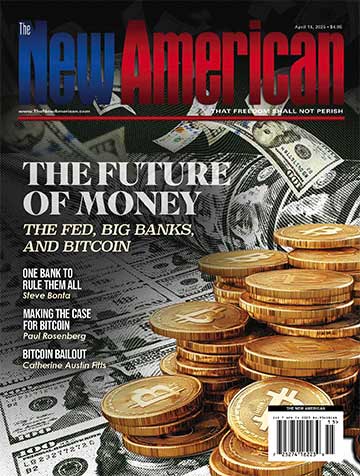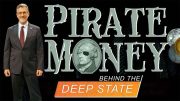
Gold is valuable because it is rare and has properties that make it desirable. And according to a recently published report, it just got a whole lot rarer thanks to a buying spree by the world’s central banks.
In its latest survey of the gold market, the World Gold Council reports that central banks bought 336.2 tons of gold in the second half of 2015, up from the 252.1 tons purchased in the first half of last year and the 308.8 tons of gold they bought in the second half of 2014.
“Central banks added to their gold reserves with renewed vigor in the second half of 2015, accelerating their purchasing programs as diversification of foreign reserves remained a top priority,” the council explains in its summary of the report.
“Economic and political risks remained stubbornly high: plunging oil prices, conflict in the Middle East, and China’s economic slowdown, to name just a few. Against this background, official sector institutions continued to recognize the need for diversification of their reserve asset portfolios,” the report concludes.
Based on the data provided in the World Gold Council’s report, the following countries have the largest gold reserves (in reverse order):
• India
• Holland
• Japan
• Switzerland
• Russia
• China
• France
• Italy
• Germany
• United States of America
That’s right. According to the figures published by the World Gold Council, the United States central bank — known as the Federal Reserve — has 8,133.5 tons of gold stored… somewhere.
As I reported for The New American in July 2015:
On July 1, Koos Jansen of goldseek.com published another in a series of posts exploring the fate of the gold allegedly kept in vaults at Fort Knox, Kentucky. In his latest article, Jansen makes some startling claims that if proven true, should instantly constrain Congress to investigate the situation with the gold inventory.
Jansen questions the accuracy and reliability of the recent audit of the reserves. In his own words, he is investigating “the audits performed on 95 % of US official gold reserves — the 7,628 tonnes stored by the US Mint — this is referred to as Deep Storage gold, 4,583 tonnes is at Fort Knox, 1,364 tonnes in Denver, 1,682 tonnes at West Point. In total US official gold reserves account for the 8,134 tonnes, owned by the US Treasury.”
Specifically, he is concerned with the biggest cache of bullion — that supposedly being held at Fort Knox.
Goldseek isn’t the first to question the federal government’s official position regarding the amount of gold held in reserve by the United Stores or the location of those bars. A quick Google search reveals that for at least the last five years, several mainstream news organizations have asked questions similar to those posed by Jansen.
For example, in 2010, CBS News published a story about the gold, questioning the veracity of the government’s claims:
Protected by a 109,000-acre U.S. Army post in Kentucky sits one of the Federal Reserve’s most secure assets and its only gold depository: the 73-year-old Fort Knox vault. Its glittering gold bricks, totaling 147.3 million ounces (that’s about $168 billion at current prices), are stacked inside massive granite walls topped with a bombproof roof. Or are they?
It’s hard to know for sure.
In 2011, CNN reported that Ron Paul (then serving as a congressman from Texas) wanted all the gold audited — the entire inventory.
“Treasury officials insist that the gold is audited annually and is all there,” the news channel reported. Paul was not willing to take the federal government at its word, however. CNN added:
During the hearing, Paul suggested that the Federal Reserve of New York, which has 5% of the U.S. gold reserves, has the ability to secretly sell or swap gold with other countries without anyone knowing.
“The Fed is pretty secret, you know,” said Paul, who leans Libertarian. “Congress doesn’t have much say on what’s going on over there. They do a lot of hiding.”
That’s right: The Federal Reserve — the ultra-secretive central bank that controls the flow of money in the United States — apparently has monopoly control over the gold, too.
Read the rest of that article for the shocking story I revealed regarding the gold (or lack of it) the Federal Reserve claims is kept at Fort Knox.
It boils down to this: There are many who claim that the Federal Reserve doesn’t want a proper audit because the gold is not there, at least not all of it. Some groups believe that as part of its effort to manipulate the economy, the Federal Reserve has sold the gold. “The gold market is being manipulated by the Fed,” says Gold Anti-Trust Action Committee spokesman Chris Powell. “It’s involved in gold swap agreements with foreign banks. Gold is a major determinant of interest rates.”
An audit would answer this crucial question. Perhaps it’s time to force open the 22-ton door that stands between our alleged gold reserves and the eyes of our elected representatives.
Our neighbors to the north don’t have to worry about any audit because apparently they don’t have any gold to count! On March 4, 2016 The Globe and Mail reported that Canada is out of the gold hoarding business:
Canada’s golden age is over — at least in a manner of speaking.
The latest report on the country’s official international reserves, published Thursday, shows zero gold on the ledger.
The government has been winding down its holdings of the precious metal for years, but this is the first time it has declared itself to be effectively gold-free since the exchange fund account was established in July, 1935.
The Globe and Mail story quotes the opinion of Ian Lee, a professor at the Sprott School of Business at Carleton University in Ottawa, as to why the United States and other countries apparently continue caching the ore. “I think the reason the U.S. Federal Reserve hasn’t sold off more gold is that it knows it would get attacked in Congress,” Lee said.
There are reasons to doubt the professor’s faith in the U.S. Congress.
First, the unelected governors of the unconstitutional central bank have an absolute stranglehold and monopoly over the flow of our nation’s money and credit. Not once since its inception in 1913 has there ever been a thorough audit or an accounting to Congress about its activities.
During its century-long reign over the financial well-being of our country, the Federal Reserve has manipulated our currency until it is nearly worthless. Meanwhile, Congress turns a blind eye and a deaf ear to the crisis and the calls to control it.
The fact is that since that day in 1913, the dollar has lost over 95 percent of its purchasing power. Most, if not all, of this precipitous decline was caused by the monetary policy of the Federal Reserve.
Adding insult to injury, during testimony to Congress in 2009, Ben Bernanke refused to reveal to committee members the names of the institutions that received trillions of dollars in bailout money from the Fed. Later, he told our elected representatives that he would not disclose the identity of the foreign banks that were parties to sweetheart deals with the Federal Reserve.
When it comes to the central bank and its machinations, the fix is in. The Fed — ostensibly a non-profit organization — owns the mint, the money, and sets the terms of the loans it makes to the federal treasury. What’s more, there is no product; there is nothing being loaned other than worthless paper that can never be traded in for anything of value because all that is used to secure the worth of the currency is now owned by the very bankers who control the Federal Reserve.
So, while the World Gold Council may consider the U.S. the world’s largest gold owner, there is no real way of verifying the Fed’s possession of even a single ingot until Congress forces the Fed to open its books and then close up shop.




